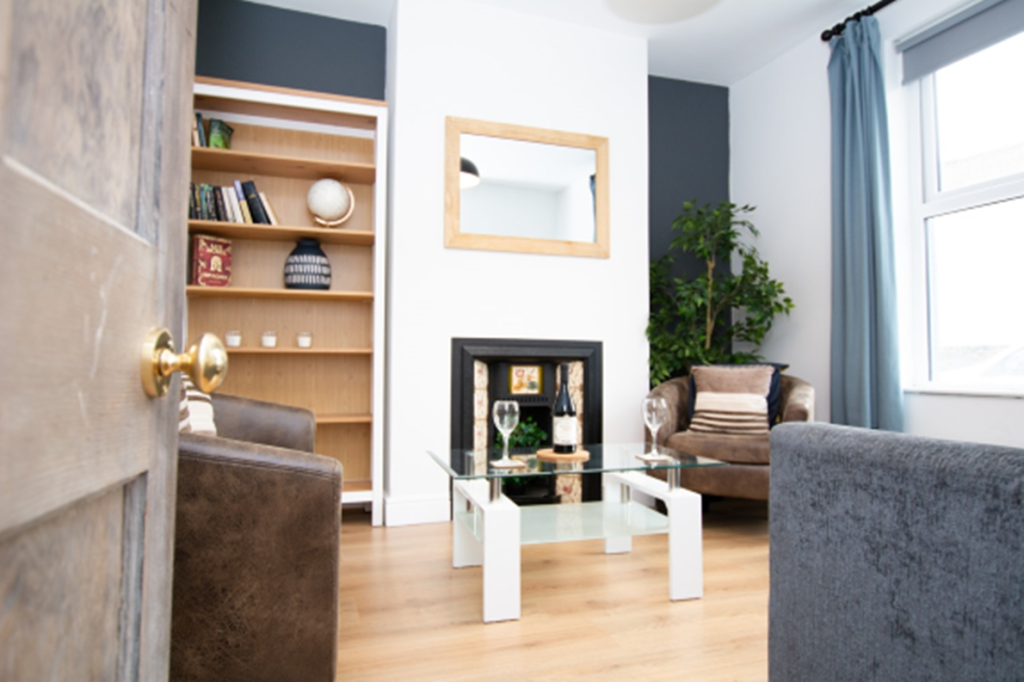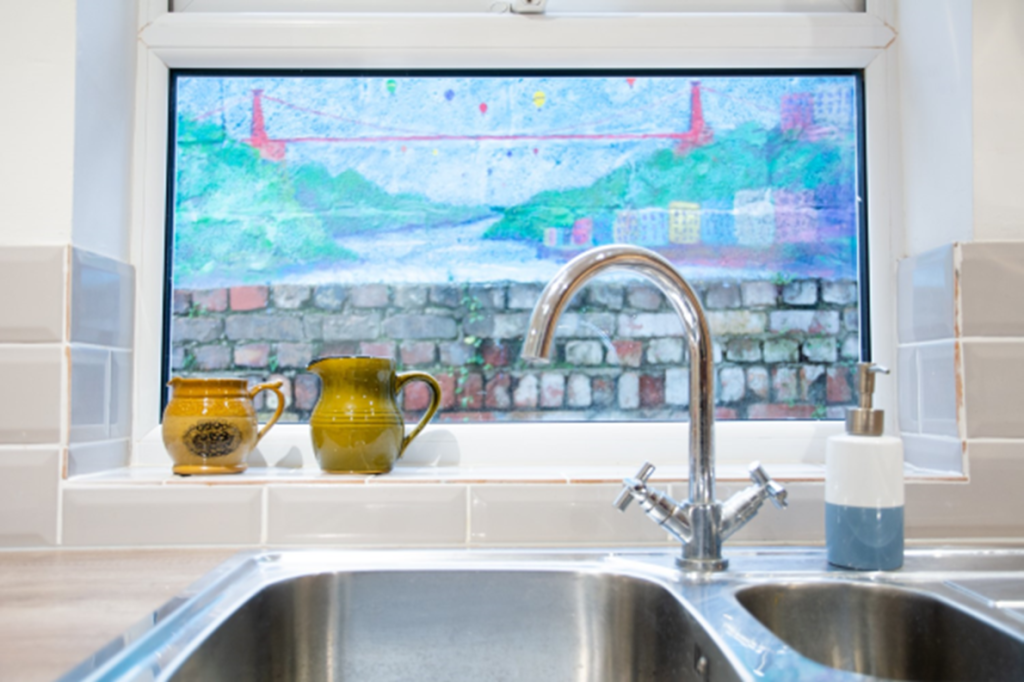PP: £253,770
Work Costs: £50,000
Total Costs: £303,770
End Value: £360,000
Profit: £56,230
ROCE*: 18.5%
*Return on Capital Employed
The Property
This is a two bed end of terrace house located in the increasingly sought after area of St Werburgh’s. Having asked a local agent for a ‘seriously honking property in need of extensive work and with good margin,’ they offered this. It needed a full rewire, new central heating, new windows and doors and extensive damp treatment including the replacement of the main bedroom and bathroom joists.
The Plan
The plan was to keep it as a two bed house, but to open the downstairs into a kitchen-diner layout and install an en-suite bathroom in the front bedroom. It was James’s first Bristol project and so to learn, he decided to manage the work himself instead of through a single contractor. He would do ‘everything destructive and hire trades to do everything constructive.’ He learnt a lot. The work included:
- Remove two structural walls and two chimney breasts to create a kitchen diner.
- Damp proof all downstairs walls.
- New windows and doors throughout.
- New kitchen and bathroom.
- Install an en-suite bathroom.
- Replace bedroom and bathroom floor joists.
- New brick wall and garden
Exit Plans
Sell. The original plan was to sell the property on for a profit following refurbishment. The area enjoys high buyer demand which made the ‘buy-to-sell’ (BTS) option a viable one.
Serviced Accommodation. St Werburgh’s is a popular area with a number of breweries and local restaurants. Being easily accessible to the M32 and yet only a 15 minute walk from the town centre, it was in a good position to provide short stay accommodation for both business and leisure guests.
Buy-to-Let. The last option was to let the house out to a long term tenant. For the same reasons as above, there would have been plenty of demand. This would have been a hassle free but lower yield option.
Lessons Learnt
- Specialists. Time vs Money. Whilst it was a valuable opportunity to gain a deep understanding of property renovation, it consumed a lot of time. A wiser option would have been to hire labourers to do the simple work. This would have allowed us time to manage trades and look outside of the project for investors and more opportunities.
- A jack of all trades is a master of none. We worked closely with a builder who proved to be very capable in structural work. We therefore took his word for it when he proudly claimed proficiency in plastering and tile work. Both we and the builder were disappointed with the results.
- Tradesmen Availability. Using multiple new tradesmen has its challenges. First, they are likely to have multiple commitments. This means they may cancel or delay their work with you. Second, they may underestimate the time a job will take. This makes it difficult to book in subsequent tradesmen for the next phase of work. Third, unless there is a bond of loyalty with them, some may take shortcuts where they can get away with it. The risk of these can be can be reduced by giving the job to an established individual contractor or through building up an effective team of trades over time.
Lessons Retained
- Third Party Wall Agreements. Medium to heavy work to a party wall is not permitted unless the neighbouring owner signs a third party wall agreement. We appreciated this when his labourer unwittingly inserted 2 feet of an M10 steel rod into the neighbour’s sitting room!
- Paying for quality. Instead of refurbishing the property to the minimal standard, time and money was spent to ensure the property was both desirable and robust. Not only did this reduce the maintenance required when we decided to keep the house, it also gave the house a competitive edge when advertised on AirBnB.
- Pay by Instalments. It is better to pay your team in instalments and leave approximately 15% of the overall amount until the end. This allows you hold them to account should they deliver incomplete or substandard work.






